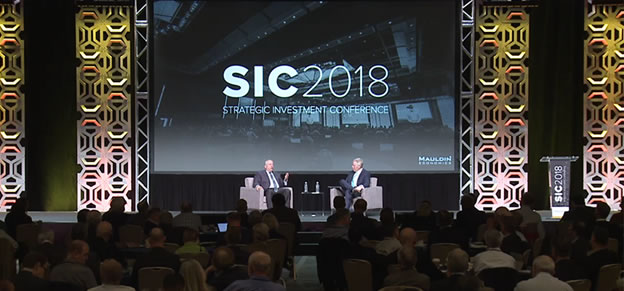It’s an Ugly Picture If You Are Looking for Value in Stocks
Stock-Markets / Stock Market Valuations Mar 08, 2018 - 02:34 PM GMTBy: John_Mauldin
By Patrick Watson : The long-awaited Strategic Investment Conference 2018 kicked off with a keynote from David Rosenberg of Gluskin Sheff titled, “Year of the Dog: Will It Bark or Bite?” (Spoiler: The answer is “bite.”)
Rosenberg began by running through a list of his own metrics: forward P/E, price/sales, price/book value, enterprise value/EBITDA. All of them point to record-high valuations.

Source: Mauldin Economics
Looking at normalized charts over time, they’re now at the 83rd percentile or higher. Price/sales is at the 99th percentile. The bottom line: it’s an ugly picture if you are looking for value in equities.
Rosenberg shared a scary quote from Howard Marks: “Most valuation parameters are either the richest ever or among the highest in history. In the past, levels like these were followed by downturns. Thus a decision to invest today has to rely on the belief that ‘it’s different this time.’ I’m convinced the easy money has been made.”
He pointed out that even the Fed admits that valuations are high. Our policymakers themselves believe this can’t continue for long. In fact, the Shiller CAPE ratio now stands at its second-highest level in decades. How long will that last?
History shows that high P/E ratios are usually followed by years of low returns in equities.
The 2% Inflation Target Is Nonsense
Later, Rosenberg moved on to monetary policy and picked up on the Federal Reserve’s 2% inflation policy.
To paraphrase, he said, “On what planet does 2% annual inflation constitute price stability? Prices can’t be rising and stable at the same time. This makes no sense. Furthermore, why 2%? Why not 1%? Whatever the inflation target, the Fed has proven unable to hit it, so maybe it’s time to rethink this whole idea.”
Rosenberg also pointed out that the composition of the Federal Open Market Committee had vastly shifted since 2017. At the beginning of 2017, there were no hawks in that group. Between departures, additions, and voting rotation, now it’s four hawks, one dove, and one unknown, by Rosenberg’s assessment.
This should not comfort anyone who hopes the Fed will pull back on tightening and balance sheet roll-offs.
Credit Shows Warning Signals
Then Rosenberg shifted to late-cycle behavior and looked at the erosion in credit quality as one of the warning signals.
He stressed that former big buyers of corporate debt have started to “pull back.” Although profound, this trend has not received proper attention among investors.
The situation on the retail side isn’t better either. Rosenberg pointed out that consumers begin to struggle to make credit card payments.
He quoted new Fed chair Jerome Powell as saying that we are encouraging risk-taking too much. One of Powell’s primary concerns is that more accommodative policy could undermine financial stability.
And yet, his predecessor Janet Yellen saw no “red flags” regarding financial stability.
Get Live Updates from the Strategic Investment Conference 2018
Learn from 25 top financial experts, best-selling authors, and investment professionals as they discuss their best investment ideas and predictions for the economy, financial markets, and geopolitical relations. Tune in to the SIC 2018 live blog now!
John Mauldin Archive |
© 2005-2022 http://www.MarketOracle.co.uk - The Market Oracle is a FREE Daily Financial Markets Analysis & Forecasting online publication.



